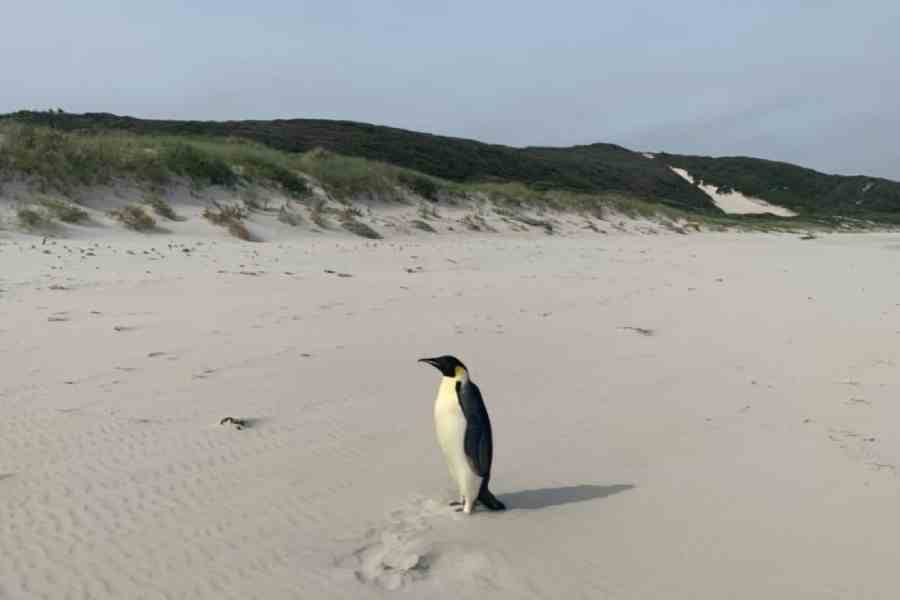It was a day as Australian as you can get: Sun, waves and surfing at the beach.
And then something distinctly un-Australian turned up.
Aaron Fowler and a friend were heading back to the parking lot after a day in the waves. “We saw something coming out of the water,” Fowler, a 37-year-old drywall repairman, said. “We thought it was a seabird, but then we thought, ‘Oh, that’s way too big,’ and it had a big, long neck and a tail sticking out like a duck.
“It stood up in the water and waddled straight up to us and just started cleaning itself.”
Standing there on the beach in the small town of Denmark in western Australia on Friday afternoon was a male emperor penguin, about 3,380km from where one might expect to find it, in Antarctica.
Fowler had seen plenty of dolphins and other creatures in the waves, including one leopard seal, which is also native to Antarctica, but he never expected a penguin. “We were in shock,” he said.
Even someone with years of experience studying penguins was surprised at the sighting. “That crazy young penguin,” said Dee Boersma, a professor of biology at the University of Washington and author of Penguins: Natural History and Conservation.
“Emperor penguins move around, because they have to be on an ice sheet or a glacier to raise the young, and the glaciers are eroding away,” she said. “That’s not unusual. You’ve got to continue to swim until you find food.
“But this is the furthest north I’ve heard of an emperor penguin.”
Record low sea-ice levels in the Antarctic have wreaked havoc on the lives of emperor penguins. Penguins have sought new breeding grounds as a result, but normally they stay relatively close to their old homes.
This penguin’s motivation for the much longer trip was almost certainly food, Boersma said, especially as it was an emperor, the largest penguin species with the biggest appetite.
“You may be a young bird without much food, so you’re going to look elsewhere,” Boersma said. “You’ve got to continue to swim until you find food.”
Moving around is common among penguins, though normally over much shorter distances. “Young penguins have to explore their world,” Boersma said.
The penguin who arrived in Australia did not seem to have been flummoxed too much by its new surroundings, even when finding itself on a beach with surfers, instead of sea ice.
The penguin “seemed completely happy”, Fowler said. “It was not at all shy. It was very friendly. It was quite happy in our company.”
Boersma said: “I think he was just looking for a place to land. It doesn’t matter. You like to rest a little.”
She added: “As long as he’s in a place with a lot of food, he’ll be fine.”
While this may be the longest known journey under a penguin’s own power, Boersma knows of a longer trip, with an asterisk.
She noted that a Humboldt penguin had been found in Alaska, despite penguins normally being found exclusively in the southern hemisphere. That penguin hitched a ride, probably on a tuna boat, she said: “You can’t come into a port with a penguin, so they probably threw it overboard.”
But don’t fear for the penguin in Alaska, either: “It was doing fine, living on herring,” Boersma said.
Fowler alerted the authorities about the newly immigrated Aussie penguin.
It was picked up and is being cared for; its rehabilitation is expected to take a few weeks, the Department of Biodiversity, Conservation and Attractions of Western Australia told CNN.
While the penguin may have taken to life Down Under, it soon discovered that sand and ice are two different things.
New York Times News Service











